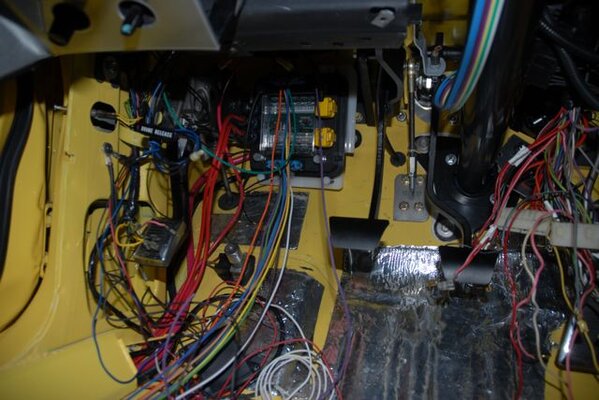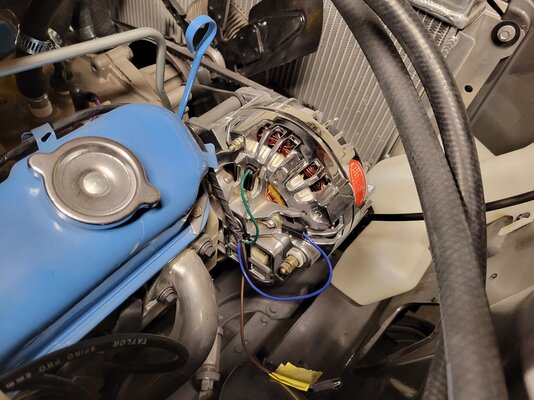FY1TopBanana
Well-Known Member
The OP’s original question, as I understand, will the ammeter have to be by-passed if an alternator with a higher output capacity is swapped into place of the original spec. alternator with new reproduction wiring and all stock vehicle loads? Nothing about a complete redesign of the original charging system to modern specifications. Alternators don’t “push” anything, if the stock vehicle loads are not changing, there will be NO additional current flow anywhere. If any added loads remain on the alternator side of the ammeter, as originally designed, the ammeter current (battery charging/discharging) is not impacted whatsoever under normal operating conditions.
There is added potential charging current with a higher capacity alternator, as such, the conductors/connections should be sized appropriately for this added potential. Ammeters do not have to be by-passed under these stated conditions. Yes, the original 12ga conductors and Packard bulkhead terminals, and later Molex terminations proved to be under-rated in this circuit, even for the original spec. alternator. We were dealing with overheated bulkhead terminals at the dealers when these cars were relatively new.
Alternators don't push anything? EMF = electromotive force or why is a charge voltage 13.7 - 14.1 for a 12 v battery?
"Electromotive Force is the amount of energy delivered per unit electric charge by a power source such as a generator or a battery (abbreviated E or EMF). As the generator or battery works on the electric charge being transported within itself, energy is changed from one form to another. The device's positive terminal becomes positively charged, while the negative terminal becomes negatively charged. The Electromotive Force is the work done on a unit of electric charge, or the energy gained per unit of electric charge. It is abbreviated E in the international metric system, but it is also known as EMF.




















